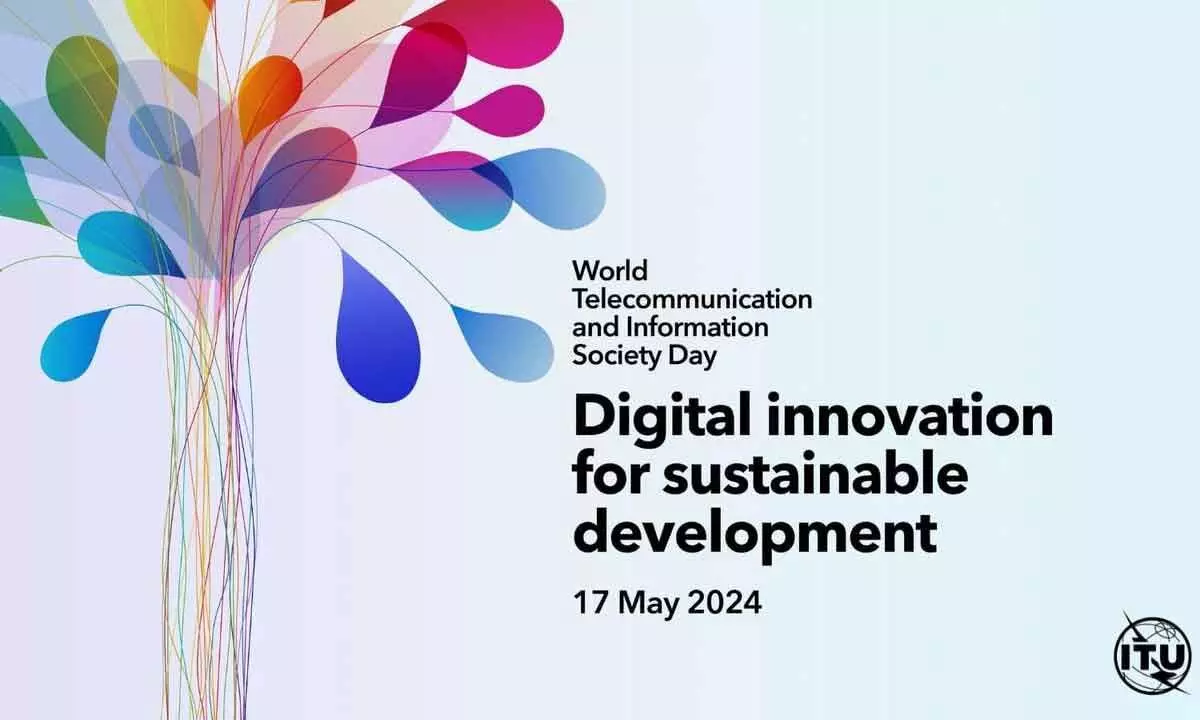Digital innovation can drive sustainable development and ensure all-round prosperity
Today is World Telecommunications & Information Society Day
image for illustrative purpose

One must understand the pivotal role played by the BSNL 4G ‘saturation project’ in enabling digital innovations in the rural areas. This is used by BSNL to ensure availability of 4G signals in 24,680 uncovered villages in remote and difficult areas
The World Telecommunications & Information Society Day (WTISD) is being celebrated every May 17 since 1969. This commemorates the signing of the international telegraph convention and founding of ITU (International Telecommunications Union) in 1865.
This year's theme for WTISD is ‘The power of digital innovation in advancing sustainable development and prosperity for all’.
Building a sustainable future, demands innovative thinking and action and this precisely where digital innovation comes in handy. It has the overwhelming power to connect everyone and unlock sustainable development and prosperity for all. There is no denying that digital innovation is the key driving force behind economic progress and global development. Innovative technologies can help to tackle the world's most pressing challenges, from fighting climate change to eliminating hunger and poverty. They can help achieve 70% of the targets under the UN (United Nations) Sustainable Development Goals by 2030. But the digital divide hinders innovation in many parts of the world. Dearth of relevant suitable policies, investment and digital skills leave many countries struggling to keep pace with the fast changing digital landscape.
Indian scenario-UPI: One apparent effect of digital innovation in our country, even in rural areas where 3G signal is available, has been the UPI (Unified Payment Interface) payments mode. It is a great contribution by the fintech community and our country is fully leveraging it. From among government undertakings, KSRTC (Karnataka State Road Transport Corporation) has, in a way, pioneered UPI payment system for purchase of bus tickets. The usage of UPI has been such that it accounted for 62% of digital payment transactions in F.Y 2022-23, while the year-on-year growth in the value of banknotes in circulation has decreased from 9.9% in F.Y 2021-22 to 7.8% in F.Y 2022-23. Facilitating further has been Reserve Bank of India (RBI), which has embarked on ‘Mission har payment digital’.
Navigation through GPS: Navigation through GPS (Global Positioning System) is used by vehicle drivers, including the less educated people.
On this count, one must understand the pivotal role played by the BSNL 4G ‘saturation project’ in enabling digital innovations in the rural areas. This is used by BSNL to ensure availability of 4G signals even in 24,680 uncovered villages in remote and difficult areas. That apart, 6,279 villages having only 2G/3G connectivity will be upgraded to 4G connectivity. The project will promote delivery of various e-government services, banking services, tele-medicine and tele-education, among others through mobile broadband. Fast internet speeds in remote areas can make a big difference in the economic growth, as India lives in its villages.
5G- based innovations: India has become the fastest 5G rollout country. The 5G network roll out will add ₹ 35 lakh crore to the economy and usher in positive changes in governance, ease of living and Ease of Doing Business (EODB). Agriculture and medicine will have major innovations, based on 5G technology, which can impact the common man compared to innovations in other sectors. Power, manufacturing and logistics are other sectors that stand to benefit through innovations based on 5G technology.
Three quarters of rural India does not have access to broadband service as many locations are still without cellular/fibre connectivity. This is where comes the importance of satellite-based broadband technology as the only viable option. LEO (Low Earth Orbit) satellite constellations consisting of many satellites have to be deployed for providing broadband service in these areas.
As per Telecom Act 2023, the government can administratively allot spectrum to satellite operators, without following the auction route. After TRAI gives its recommendations on frequency and price, DOT will allocate spectrum to eligible satellite companies like OneWeb on an administrative basis.
Meanwhile, India's indigenously developed 4G/ 5G stack is attracting attention in the global market as it can serve the interests of countries in need by deploying this technology. BSNL can gainfully utilise its know-how and vast experience to provide telecom services in countries with hilly, remote, inaccessible and rural regions.
NTIPRIT (National Telecom Institute for Policy Research, Innovations and Training) can impart training to telecom personnel from least developed countries (LDCs) and improve their skill sets in ICTs.
TSPs (Telecom Service Providers) can help in the establishment of 4G/5G networks in other countries which lack this knowhow. Airtel is already providing telecom services in Bangladesh and has presence in 14 African countries.
The way forward: The theme for WTISD 2024 stresses on the motto that the fruits of digital innovation should be enjoyed by all. It raises awareness about the global digital divide and on the importance of bridging it, making optimal use of the transformative power of digital technology. India can play an important role towards this.
When digital innovations are made available in rural areas, there is also a threat of possible frauds from which the users have to be protected, especially in digital payments. DOT/TSPs/ local bodies and voluntary organisations can educate 4G users in villages and caution them against cyber and SIM frauds.
(The writer is a former advisor of DOT, Government of India)

